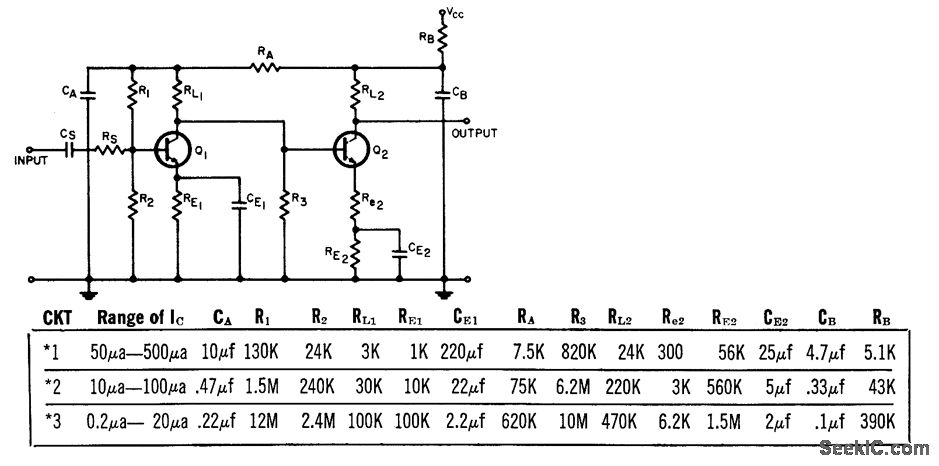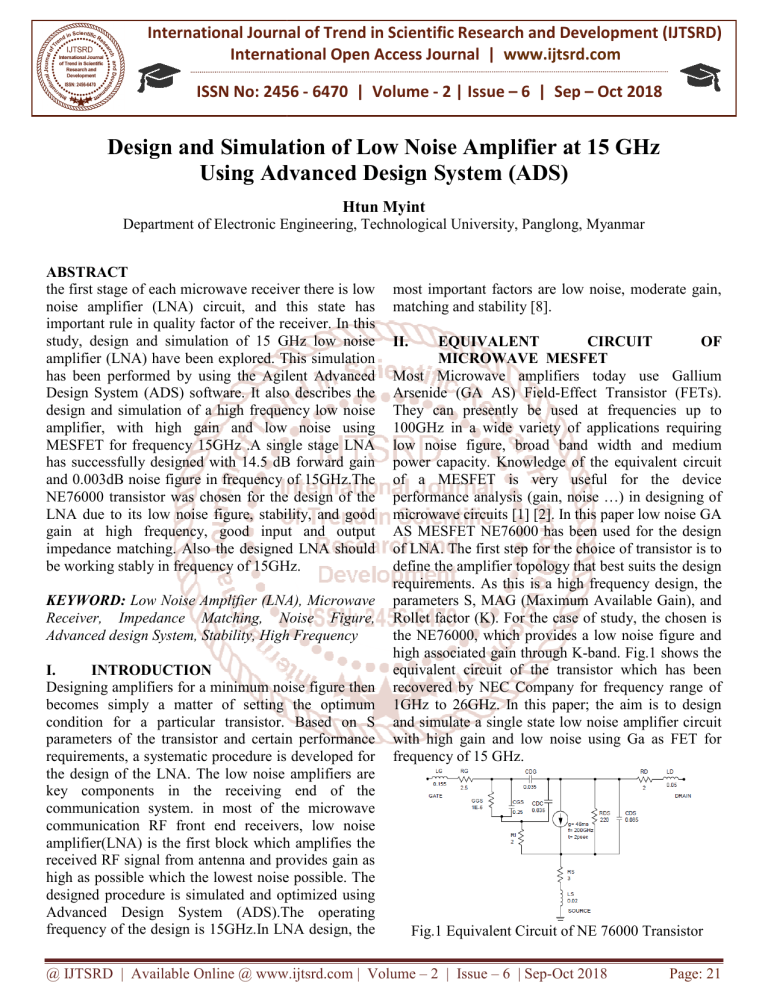LOWNOISEAMPLIFIERDESIGN Circuit Diagram #62 In this electronics tutorial mini-series I set out to build a low noise signal amplifier to measure very small signals that are usually below the generic Step 3: Calculate Noise Figure (NF) The noise figure quantifies how much the amplifier degrades the signal-to-noise ratio (SNR) of the input signal. The noise figure (NF) of an LNA can be calculated using the following equation: Step 4: Determine Gain (G) The gain of the LNA is another critical parameter and is typically specified in decibels (dB).

A Low Noise Amplifier (LNA) is an RF amplifier designed to boost very weak signals without significantly degrading the signal-to-noise ratio (SNR). These amplifiers operate in the front-end of communication receivers, positioned immediately after the antenna, to ensure that weak signals are strong enough for further amplification and processing. Many transistors have been measured and modeled for the source impedance that yields the lowest noise - measured by the noise figure (NF). The noise factor, F, is the ratio of the signal to noise ratio of the input to the signal to noise ratio of the output, NF is 10log 10 F. Noise figure (NF) is always greater than zero. Figure 2(c) shows

Step Guide to Designing a Low Noise Amplifier for ... Circuit Diagram
A Low Noise Amplifier (LNA) is an electronic amplifier designed to boost very weak RF signals while adding as little additional noise as possible (Low-noise amplifier - Wikipedia).In a receiver chain, the LNA is typically the first active component after the antenna (FAQ | ShareTechnote).Its primary role is to increase the signal strength of faint incoming radio signals to a level suitable

1.2.3.3 Flicker noise. Flicker noise, also known as 1/f noise, is a signal or process with a frequency spectrum that falls off steadily into the higher frequencies, with a pink spectrum. It occurs in almost all electronic devices and results from various effects, though it is always related to a direct current (DC). 1.2.3.4 Partition noise Now, let's fire up the RTL-SDR's bias tee. This should supply power to our LNA and it should start amplifying the input signals. RTL-SDR Bias tee on and amplifier starts amplifying its input signals. Immediately, the noise floor jumps by ~20dB and because of excess power, we see intermodulation products getting generated.

Designing and testing a low Circuit Diagram
For someone into HAM radio, you might have come across weather satellite LRPT reception using an RTL-SDR. Receiving images from a satellite may require a good low-noise amplifier. On the other hand, someone into radio astronomy definitely requires a very low noise amplifier to receive the hydrogen line frequency emanating from the milky way.
